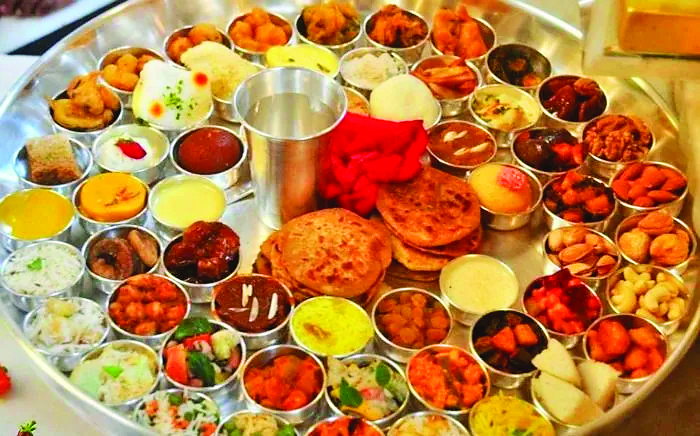
The landscape of the human body is dominated by the digestive system; oftentimes the ecosystem of the mind is no exception. A decision or discussion about food is witnessed in most conversations, The hallmark of hospitality is often the food that is served. Every culture holds specifications and commandments about the food on the table at designated times. Human beings are seduced, tortured, angered, pleased and tested by food all the time. “Food is not rational. Food is culture, habit, craving and identity”, writes Jonathan Safran Foer.
Before cutlery was invented, food reached the mouth through the hands. The habit continues in most parts of contemporary India, the only difference being the stringent hand washing that has been added to the pre-meal phase. According to the Shastras, the process of digestion is triggered off through the tactile sensation, forming a mudra that initiates the digestion sequence for all the sense organs; which, in turn send signals the digestive glands to start producing the required digestive juices.
In the same vein, the thali system of serving food called ‘Chhappan Bhog’ included Fifty-Six kinds of food items, covering portion control, the Food Pyramid and nutritional balance in one stroke. The story behind Chhappan Bhog is colorful. It is said that Lord Krishna remained hungry for seven days when he picked up the Govardhan Parbat to shield his beloved Gokul village from incessant rain due to Lord Indra’s anger. Since he ate eight meals every day and seven multiplied by eight is Fifty-Six or Chhappan, the village of Gokul expressed its gratitude by serving him a Chhappan Bhog thali – when Lord Indra relented and the rain stopped. Ever since, this meal is served to Lord Krishna on Janam Ashtami and Chhappan Bhog has become a favorite for appeasing the deities.
The whole idea behind prasad or food offering can be found in most cultures in some form or the other; the specifics may vary from religion to religion. The act of eating has generated heat and dust in some form or the other. As Louise Fresco writes, “Food, in the end, in our own tradition, is something holy. It’s not about nutrients or calories. It’s about sharing. It’s about honesty. It’s about identity”. The relationship between health and food occupies a main part of research studies. ‘Tell me what you eat and I will tell you what you are’ is not just a pretty way of describing people, research has proved that the relationship between the gut microbiome and brain function through the gut-brain axis is not a myth but a hard reality that invokes mindful food habits.
When a young Israeli saw an older Turkish man freezing 1000 feet away from the Mt. Everest Peak, he gave up his climbing dream to save his life. Later, the Israeli, Nadav Ben-Yehuda was asked to explain his reasons for choosing to save Aydin Irmak’s life rather than pursuing his climb. He said, “Because we had shared a meal together”. This sharing is the strategic reason behind all those banquets and elaborate menus at the meetings of world leaders. On a lighter vein, sharing a meal is a way of stating: You are the apple of my pie!
Cesar Chavez writes, “If you really want to make a friend, go to someone’s house and eat with him…the people who give you their food give you their heart”.Ready to love, tummy and all?